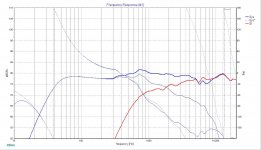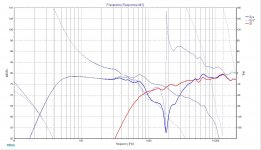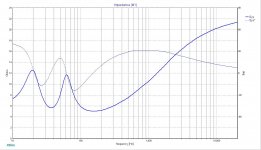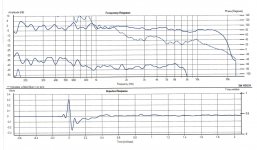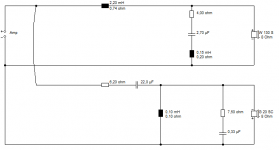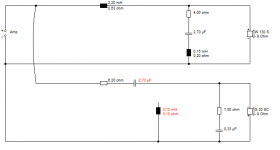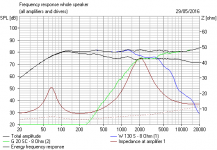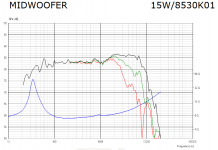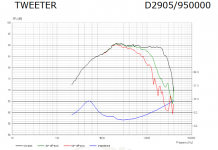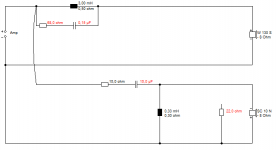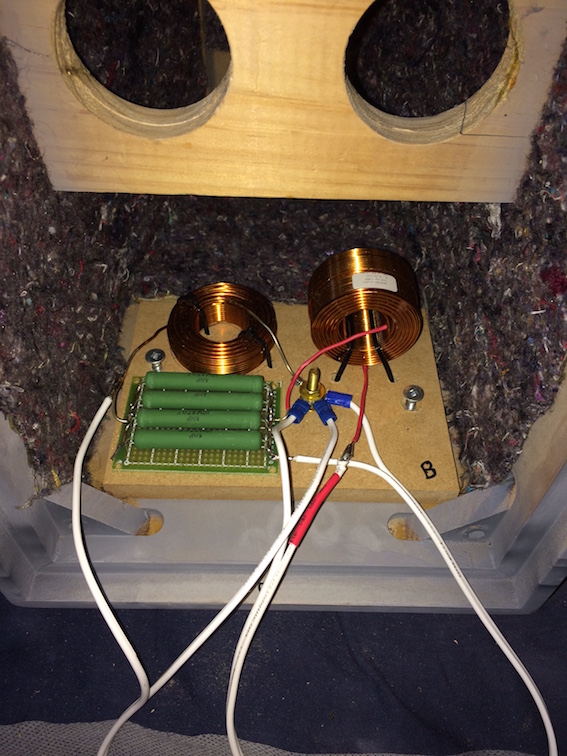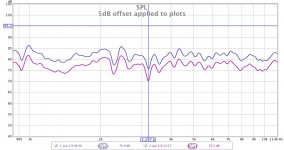BTW, I like all the drivers in the intimates, but haven't heard the particular combination. I've only seen the PE site, and if the FR is correct, I know already the tweeter would be too bright for me.
Another very similar design is from Gravesen, of course, the Revelator-4R. I use the same tweeter, with a Peerless woofer in the LM-1. Honestly the Peerless woofer was a lot easier to match to the tweeter than the Revelator. I see in the Intimates the same issues I had matching a Revelator to an AMT in terms of final phase alignment.
The Vifa/Peerless matching is a dream.
Best,
Erik
Another very similar design is from Gravesen, of course, the Revelator-4R. I use the same tweeter, with a Peerless woofer in the LM-1. Honestly the Peerless woofer was a lot easier to match to the tweeter than the Revelator. I see in the Intimates the same issues I had matching a Revelator to an AMT in terms of final phase alignment.
The Vifa/Peerless matching is a dream.
Best,
Erik
Right, but speaker inductors are not really designed to be used to deliberately short an amplifier, ...
Yes, I think this is the answer. The inductor will protect the tweeter, but may damage something else. The series cap seems much more sensible.

So, to be clear- will the parallel inductor protect
the tweeter if DC is supplied to the speaker?
Regards,
Chris
Both of the components, series R and shunted L are protecting your tweeter
but still you have 0,37V dropped across TW and about 79 mA. I don't think
it can damage it. If it can't survive 29 mW of power dissipation,
 .
.Hypothetically, if there were 37V of dc, the series 15 ohm would have dissipated
almost 90W of power. In case these failed, there would be an open circuit.
The trouble would be if the 15 ohm were shorted. Calculate the wattage on L.
p.s. keep up the good practice of writing with your own hand.
Thanks Lojzec.
8.95kW. Hopefully the fuse would have blown before then!
I think so too.
Can you please elaborate on the middle plot you posted? There is a 23dB dip in the FR at about 1800Hz.
The trouble would be if the 15 ohm were shorted. Calculate the wattage on L.
8.95kW. Hopefully the fuse would have blown before then!
p.s. keep up the good practice of writing with your own hand.
I think so too.
Can you please elaborate on the middle plot you posted? There is a 23dB dip in the FR at about 1800Hz.
Last edited:
The middle plot represents FR of the loudspeaker when the drivers are
connected in phase in relation to each other. DIYers often like to see
how things look when you invert one of the drivers and if there is a rather
deep null at XO frequency then it means that driver phase response
in this region is reasonably good aligned which shoud mean that it would
also sound ok. That doesn't mean it would not sound well if driver phase
were more apart.
In general, the simulation is based on manufacturer 2 pi data, simulated
on a baffle of yours, the same tuning and box volume. Considering so a
few parts, the performance is pretty good.
connected in phase in relation to each other. DIYers often like to see
how things look when you invert one of the drivers and if there is a rather
deep null at XO frequency then it means that driver phase response
in this region is reasonably good aligned which shoud mean that it would
also sound ok. That doesn't mean it would not sound well if driver phase
were more apart.
In general, the simulation is based on manufacturer 2 pi data, simulated
on a baffle of yours, the same tuning and box volume. Considering so a
few parts, the performance is pretty good.
But have you listened to them?
In practice?
For the most part, Steve is a well-meaning and often times helpful theoritician who likes to model designs and most likely hasn't heard the Intimates. The XO design is patterned after the still famous and sought after Sonus Faber Extrema XO design based speakers ($12,000 retail IIRC).
That tweeter is a workhorse and fully capable of handling mostly distortion free power, if needed. However, I have to keep reminding folks of the name of these speakers and the philosophy behind their use. THEY ARE NOT PARTY SPEAKERS!!!!
Ahah! I rummaged thru my original Intimates project file with hard copies I retained and found the 'smoking gun, so to speak. It shows FR top solid line, acoustic phase, dotted line and 3rd HD bottom line about 40dB down from the fundamental (~1%) in the tweeter's passband, perfectly acceptable for loudspeaker application. Since HOM defaults to a 0dB level, I don't recall the exact dB level used for the test but suspect it was in the range of 90dB.
Attachments
Last edited:
Tremendous outbreak of courtesy there, Carl, especially since I have been critical sometimes. Well done. But just because Sonus Faber do it doesn't mean we can't engage some thought. 
TBH, I haven't modelled a better crossover for a 5" bass and 1" tweeter than yours. 6dB per octave or thereabouts seems to work well. A 5" is almost a fullranger and seems to play nicely with a simple bass coil. If we push the crossover fairly high to 3kHz, all doubts about the IM distortion evaporate.
I did model this one time-aligned, which is not a biggie, but TBH a parallel crossover worked best. The series filter turned into a mess.
I found that a very low resistance 0.1mH shunt tweeter coil mapped to a 2.7uF series capacitor almost exactly, albeit with wildly different impedance.
chris737 is in a nice place, IMO. I did think some further crossover work might help the basic circuit. 8Khz bass notch, for instance. A zobel on the tweeter for the high frequency impedance flatness which amps like. And maybe a 22uF to cut out the bass leaking to the tweeter and keep the resistors cool. All worth trying IMO.
All a bit Mordaunt-Short MS10i, if you remember that sweet little speaker.
TBH, I haven't modelled a better crossover for a 5" bass and 1" tweeter than yours. 6dB per octave or thereabouts seems to work well. A 5" is almost a fullranger and seems to play nicely with a simple bass coil. If we push the crossover fairly high to 3kHz, all doubts about the IM distortion evaporate.
I did model this one time-aligned, which is not a biggie, but TBH a parallel crossover worked best. The series filter turned into a mess.
I found that a very low resistance 0.1mH shunt tweeter coil mapped to a 2.7uF series capacitor almost exactly, albeit with wildly different impedance.
chris737 is in a nice place, IMO. I did think some further crossover work might help the basic circuit. 8Khz bass notch, for instance. A zobel on the tweeter for the high frequency impedance flatness which amps like. And maybe a 22uF to cut out the bass leaking to the tweeter and keep the resistors cool. All worth trying IMO.
All a bit Mordaunt-Short MS10i, if you remember that sweet little speaker.
Attachments
Last edited:
chris737 is in a nice place, IMO. I did think some further crossover work might help the basic circuit. 8Khz bass notch, for instance. A zobel on the tweeter for the high frequency impedance flatness which amps like. And maybe a 22uF to cut out the bass leaking to the tweeter and keep the resistors cool. All worth trying IMO.
Thanks Steve. All of this is a bit above my head I'm afraid. Can any of the mods you suggest be incorporated into the existing crossover? (i.e. I don't want to buy new inductors).
I'm happy with the sound of the speakers, but if I can ease the load on the the tweeters that might be worth doing.
I'm heading off for a few days. When I get back I hope to measure the FR with my U-MIK1 and REW.
Tremendous outbreak of courtesy there, Carl, especially since I have been critical sometimes. Well done. But just because Sonus Faber do it doesn't mean we can't engage some thought.
TBH, I haven't modelled a better crossover for a 5" bass and 1" tweeter than yours. 6dB per octave or thereabouts seems to work well. A 5" is almost a fullranger and seems to play nicely with a simple bass coil. If we push the crossover fairly high to 3kHz, all doubts about the IM distortion evaporate.
I did model this one time-aligned, which is not a biggie, but TBH a parallel crossover worked best. The series filter turned into a mess.
I found that a very low resistance 0.1mH shunt tweeter coil mapped to a 2.7uF series capacitor almost exactly, albeit with wildly different impedance.
chris737 is in a nice place, IMO. I did think some further crossover work might help the basic circuit. 8Khz bass notch, for instance. A zobel on the tweeter for the high frequency impedance flatness which amps like. And maybe a 22uF to cut out the bass leaking to the tweeter and keep the resistors cool. All worth trying IMO.
All a bit Mordaunt-Short MS10i, if you remember that sweet little speaker.
Aaahh, Steve you just can't resist throwing up some more sims, even if they aren't really relevant to the topic at hand. Mixing an image of a published SS bass/mid FR with a model and XO's for other drivers (Mordant Short)? is that really helpful or just self serving?
Carl, I like your design at many levels. And I'm respecting the basic concept. 
I was looking at the Scanspeak D2905/9500 tweeter today. It's one Lynn Olson knows well:
The Ariel, Part II
Lojzek's sim of Chris' speaker is interesting. It's a bassy speaker with that 3mH.
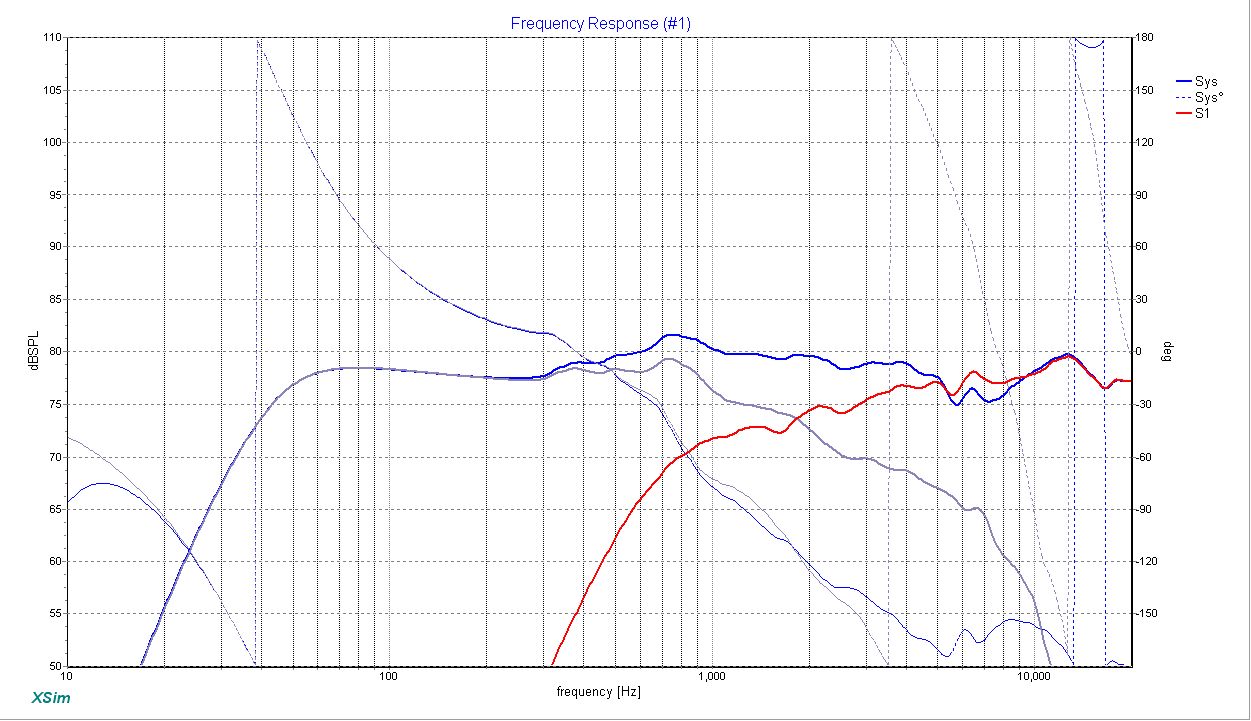
I see a high Q tweeter Fs issue at about 700Hz. I see a bit of breakup and a phase problem at 7kHz. Because the woofer is only 10dB down at that point. And the hot-running 15R resistor.
Most of that gets fixed in the circuit below. The 7-8kHz tank notch seems to work better than an LCR or a bass zobel here.
The 15uF doesn't affect FR much, but makes the circuit far less dependant on a high quality coil and avoids the heat issue.
The 22R is something I want to help the tweeter Fs and improve the HF impedance to the amplifier, but it will drop tweeter level 2dB unless you change the 15R to a 12R. I'd have to hear the speaker to know what is easiest.
IMO, all this is just applying general principles. We actually don't need to know much about the 5" and 1" drivers as long as they are flattish.
I was looking at the Scanspeak D2905/9500 tweeter today. It's one Lynn Olson knows well:
The Ariel, Part II
Lojzek's sim of Chris' speaker is interesting. It's a bassy speaker with that 3mH.

I see a high Q tweeter Fs issue at about 700Hz. I see a bit of breakup and a phase problem at 7kHz. Because the woofer is only 10dB down at that point. And the hot-running 15R resistor.
Most of that gets fixed in the circuit below. The 7-8kHz tank notch seems to work better than an LCR or a bass zobel here.
The 15uF doesn't affect FR much, but makes the circuit far less dependant on a high quality coil and avoids the heat issue.
The 22R is something I want to help the tweeter Fs and improve the HF impedance to the amplifier, but it will drop tweeter level 2dB unless you change the 15R to a 12R. I'd have to hear the speaker to know what is easiest.
IMO, all this is just applying general principles. We actually don't need to know much about the 5" and 1" drivers as long as they are flattish.
Attachments
Last edited:
And the hot-running 15R resistor.
Re the resisitor(s)- I ran my 50W amp at full volume with a 6kHz input for about 10 minutes (I picked 6kHz for no other reason than it was the least painful sound to my wife's ears).
The 3 resistors peaked at 42 degrees C on my temp probe. They were just warm to the touch. A bigger amp would obviously heat them more, but I can't see them getting anywhere near their rated temperature. I believe the original Extrema crossover had a 50W resistor?
The 22R is something I want to help the tweeter Fs and improve the HF impedance to the amplifier, but it will drop tweeter level 2dB unless you change the 15R to a 12R. I'd have to hear the speaker to know what is easiest.
Hi Steve,
I can easily drop the 15R to 12R by bringing the fourth 47R resistor into the circuit. That's just a matter of soldering a bridge onto it.
I may have a play with this after I have measured the FR of the speaker and had a listen to them in my workshop (their intended home). They sound great in my lounge, so I'm not highly motivated to modify them.
Cheers,
Chris
Re the resisitor(s)- I ran my 50W amp at full volume with a 6kHz input for about 10 minutes (I picked 6kHz for no other reason than it was the least painful sound to my wife's ears).
The 3 resistors peaked at 42 degrees C on my temp probe. They were just warm to the touch. A bigger amp would obviously heat them more, but I can't see them getting anywhere near their rated temperature. I believe the original Extrema crossover had a 50W resistor?
I don't recall the wattage on the Extrema resistor, but they sure had a humungus heat sink on the back side to help keep it cool.
We are all crazy guys here, Chris. We just like trying things. 
TBH, Carl's design is quite terriific for something so simple. 3 elements.
I do know what I'm talking about here to some extent. I was listening to something close to these Scanspeaks recently:
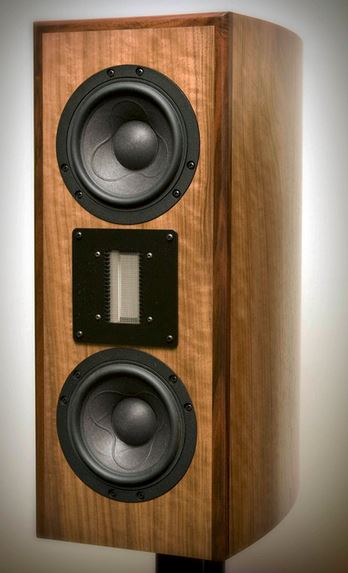
We can't do a tweeter Zobel here, IMO, because it will rolloff the top end too fast with an MT. Easier with an MTM.
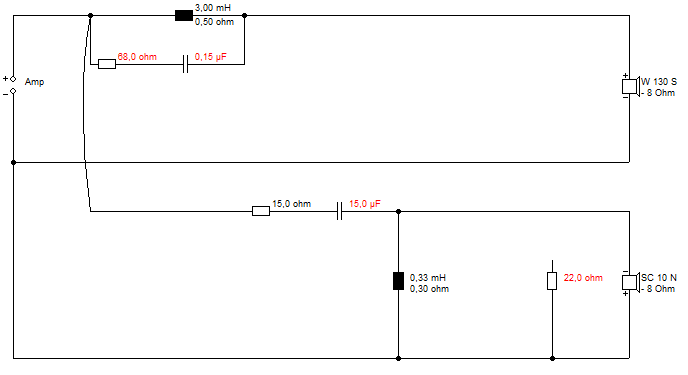
Truthfully, these are tiny differences.
TBH, Carl's design is quite terriific for something so simple. 3 elements.
I do know what I'm talking about here to some extent. I was listening to something close to these Scanspeaks recently:

We can't do a tweeter Zobel here, IMO, because it will rolloff the top end too fast with an MT. Easier with an MTM.

Truthfully, these are tiny differences.
- Status
- This old topic is closed. If you want to reopen this topic, contact a moderator using the "Report Post" button.
- Home
- Loudspeakers
- Multi-Way
- Intimates 2-way Build
